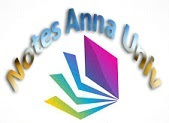EE6503 POWER
ELECTRONICS, Third year, Department
of Electrical and Electronics Engineering, Model Exam Questions.
PART A(10*2=20)
1.
Define
holding current and latching current in SCR.
2.
What
are the advantages of CTO over SCR?
3.
What
is overlap angle?
4.
Mention
some of the applications of converters.
5.
What
is meant by PWM control in DC chopper?
6.
What
is duty cycle?
7.
Compare
CSI and VSI.
8.
Give
the use of resonant switching.
9.
What
is integral cycle control?
10. Write the output RMS voltage for
single phase voltage controller with resistive load.
PART
B(16*5=80)
1)
a.Explain
the structure and different modes of operation with characteristics of
TRIAC.(16)
(OR)
b.1)Draw
the TURN OFF characteristics of SCR and explain the mechanism of turn off.(8)
2)Discuss in detail about the current
commutation method of Turn off SCR(8)
2)
a.Explain
the operation of three phase 3 pulse converter with R load .Derive for average
output voltage.(16)
(OR)
b.1)Explain
the operating principle of single phase dual converter.(10)
2)A single phase full converter is
connected with R load the source voltage is 230 V ,50Hz. The average load
current is 10A .for R=20 ohm find the firing angle(6)
3)
A.Explain
the working of Buck Boost converter with sketch and waveforms and also derive
the expression(16)
(OR)
b.Discuss
the principle of operation of DC-DC step down chopper with suitable wave form.
Derive the expression for its average DC output voltage.(16)
4)
a.With
neat circuit and output waveforms, explain the operation of three phase bridge
inverter in 180 degree mode of operation.(16)
(OR)
b.Explain
different methods of voltage control adopted in inverter with suitable wave
forms.(16)
5)
a.
Explain the working of three phase to single phase cyclo converter with neat
circuit diagram and necessary wave forms.(16)
(OR)
b.1)Write
short notes on matrix converter.
2)Explain the operation of single phase full
wave A.C voltage regulator with help of voltage and current wave form.

0 Comments